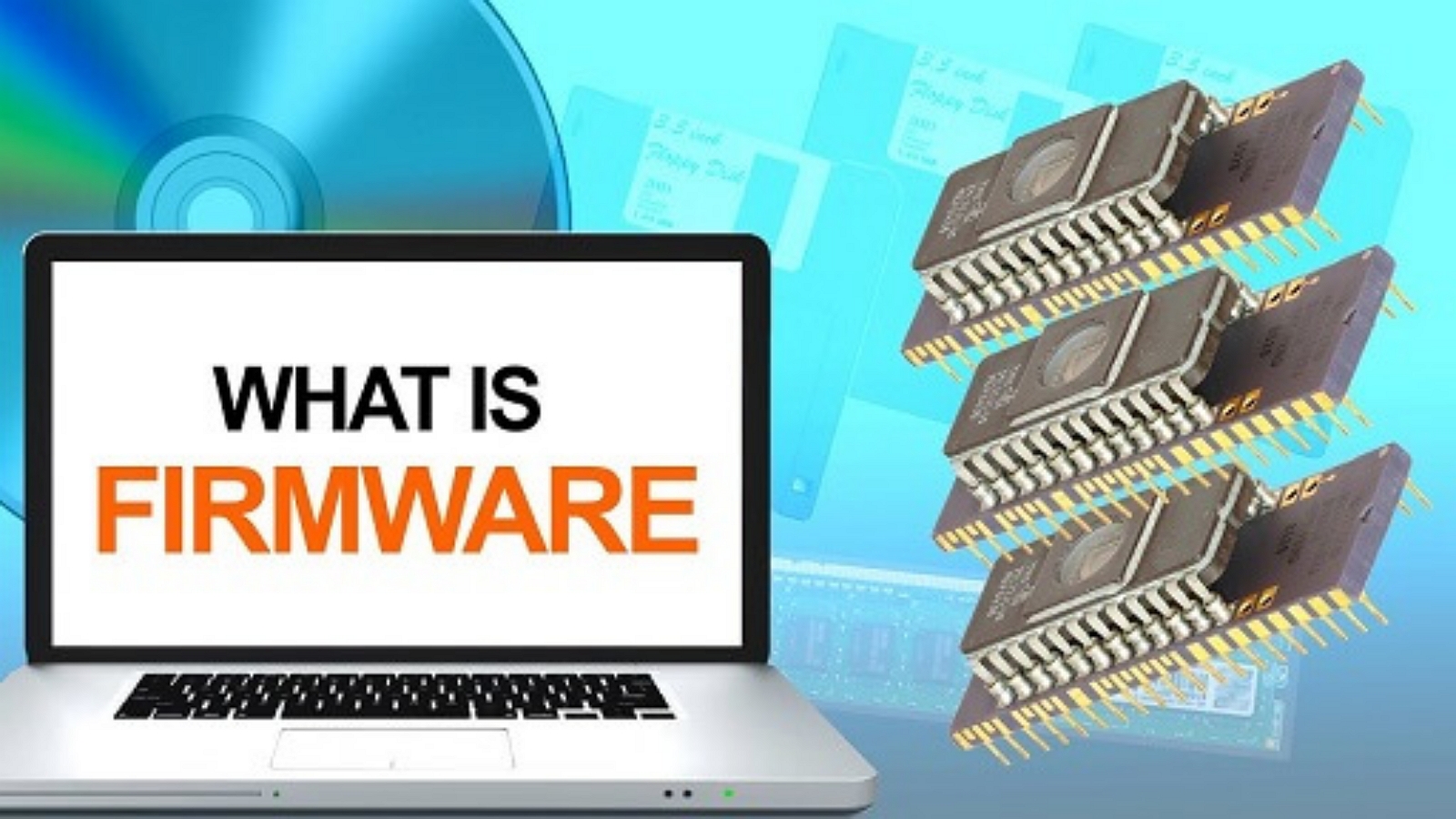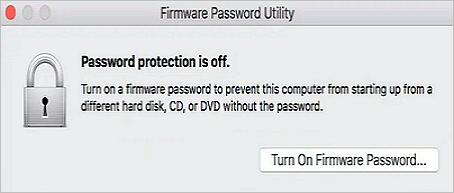Have you encountered the situation of Mac asking for a firmware password on Mac? Do you know what a firmware password on Mac means? Don't worry. This passage will provide all information you want to know about the firmware password on Mac.
What Is A Firmware Password on Mac
Firmware Password on Mac is also known as the EFI (Extensible Firmware Interface) lock. It is used to protect the personal information of one's data on Mac. People who don't know the correct firmware password cannot get access to Mac with any other external drives.
Firmware Password on Mac has something different from the administrator password. Users use the administrator password to log in or out of a Mac device. However, the firmware password is another exclusive password to prevent others from trying to open the Mac with an external storage device. A Mac requires the firmware password only when someone tries to start your Mac through an external storage device or the macOS Recovery.
We have talked about what the firmware is in our previous articles. You can click the link page below and learn more:
What Is Firmware? - Tutorial And Example
In this post, we will tell you the definition of Firmware and list the main types of Firmware. We will also explain the difference between Firmware and Software.

How to Set a Firmware Password on Mac
After being aware of what is a firmware password on a Mac and the importance of setting a firmware password on a Mac, it is time to develop a firmware password on Mac following our guide. In this part, you can find the full guide on turning on and off the firmware password on your Mac. Keep reading the article and follow the step-by-step guide below.
Turn On the Firmware Password on Mac
The guide on how to turn on the firmware password on your Mac is below. You can easily follow the guide and complete it to turn on the firmware password on Mac.
Step 1. Start your Mac. Press Command (⌘) and R together until you see the apple icon or a rotating earth icon to enter the macOS Recovery.
Step 2. There will be a utility window after you succeed in entering the macOS Recovery. Choose the "Startup Security Utility" or the "Firmware Password Utility."
Step 3. Then click "Turn On the Firmware Password."
Step 4. A window requiring you to enter a firmware password will pop out now. Set your password and remember it. Click on "Set Password."
The steps above are the complete guide on how to turn on the firmware password on Mac. Now your Mac is protected by the firmware password set by yourself, and your Mac requires the firmware password whenever someone tries to launch a Mac through an external storage device or to start up from macOS Recovery.
Turn off the Firmware Password on Mac
What to do if you want to turn off the firmware password on Mac? The text below is the guide on how to turn it off.
Step 1. Start your Mac. Press Command (⌘) and R together until you see the apple icon or a rotating earth icon to enter the macOS Recovery.
Step 2. Here the Mac computer will require the firmware password set before. Enter the firmware password.
Step 3. There will be a utility window after you succeed in entering the macOS Recovery. Choose the "Startup Security Utility" or the "Firmware Password Utility."
Step 4. Click on "Turn Off Firmware Password."

Step 5. Enter the firmware password again when prompted. Then your firmware password on Mac is turned off.
What to Do If Forget the Firmware Password
We humans are not like machines. We cannot remember everything in our life. We may take notes on our phones to keep the firmware password in mind. But what can we do if we accidentally delete the password and cannot remember it? You can directly ask Apple for help.
If you forgot your firmware password on your Mac, you could book an in-person appointment with Apple (Both an Apple Store and an Apple Authorized Service Provider are OK).
Remember to bring your Mac and the original receipt to the store to prove that the Mac is yours. Some unscrupulous people may brush the Mac this way and resell it, and apple requires the original invoice to avoid this situation.
Conclusion
In this passage, we have provided you with all information about the firmware password on Mac. We also have provided a complete guide on how to set a firmware password on Mac. I hope we have solved your questions about the firmware password on Mac.
Thanks for reading!
FAQs about Firmware Password on Mac
Here we have collected several hot topics about the firmware password on Mac. You can check the topics below to see if there has more information you need.
1. Can you bypass the firmware password on Mac?
If the owner of the Mac sets a firmware password on it, you cannot bypass it. But the owner can turn off the firmware password on the Mac. The steps to turn off the firmware password on a Mac are listed above. You can jump to the following part and follow the guide.
2. Why is my Mac asking for a firmware password?
As mentioned above, a firmware password protects one's personal information. Users set the firmware password to avoid others trying to start the Mac with an external storage device or through the macOS Recovery. So Mac asks for a firmware password to protect the owner's privacy.
3. Where is the firmware password stored on a Mac?
You can find the firmware password on Mac in the non-volatile memory on Mac's motherboard.
Was This Page Helpful?
Daisy is the Senior editor of the writing team for EaseUS. She has been working at EaseUS for over ten years, starting as a technical writer and moving on to being a team leader of the content group. As a professional author for over ten years, she writes a lot to help people overcome their tech troubles.
Related Articles
-
How to Get Windows 10 for Free [Full Guide in 2024]
![author icon]() Jean/2024-10-25
Jean/2024-10-25 -
Fallout 4 Save File Location: How to Locate & Backup It
![author icon]() Larissa/2024-10-25
Larissa/2024-10-25 -
Computer Shuts Down When Put to Sleep: Fixes Are Here
![author icon]() Jerry/2024-11-25
Jerry/2024-11-25 -
Which Is the Best Time Machine Disk Format [Fast & Full Guide]
![author icon]() Sherly/2024-08-05
Sherly/2024-08-05
EaseUS Data Recovery Services
EaseUS data recovery experts have uneaqualed expertise to repair disks/systems and salvage data from all devices like RAID, HDD, SSD, USB, etc.
